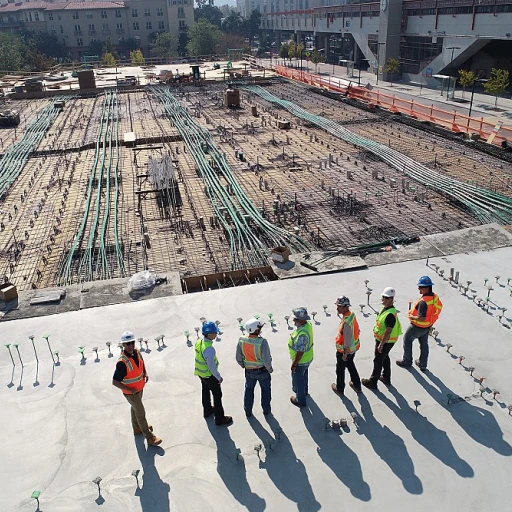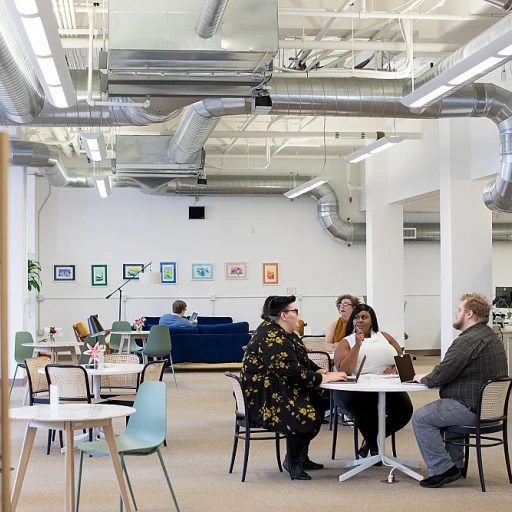
Understanding the Role of a People Leader
Grasping the Importance of a People Leader's Role
The term 'people leader' signifies more than just a title; it embodies a key role that is pivotal in shaping the success of an organization. At its core, people leadership involves guiding teams, nurturing talent, and fostering an environment that encourages high performance and continuous growth. This encompasses several aspects which can transform a good leader into a great one. Understanding the role of a people leader requires acknowledging the necessity of balancing technical skills with people management. Great leaders not only focus on the business objectives but also invest time in understanding their team members. This is crucial as it helps build trust, improve communication, and ultimately drive effective leadership. People leaders are tasked with creating a vision for their teams, aligning team goals with the broader business objectives. Leadership style varies among individuals, but the most effective those who practice servant leadership, putting team members' development and needs first, consistently lead to higher employee satisfaction and retention. Leadership skills extend beyond managing day-to-day tasks – they involve strategic thinking and decision-making that considers both current performance and future success. Furthermore, nurturing a strong company culture becomes imperative, as it lays the foundation for every team interaction and business outcome. To excel as a people leader, one must possess a deep understanding of team dynamics and the ability to resolve conflicts efficiently. This involves being adaptable, continuously learning, and staying updated on the latest trends in human resources and leadership development. As the business landscape evolves, so does the need for effective leadership. Explore potential career pathways by clicking here to discover how to enhance your leadership journey and help your team thrive.Essential Communication Skills
Developing Essential Interaction Abilities
Being an effective people leader requires more than just knowledge of technical skills or an ability to meet business objectives. Great leaders possess essential communication skills that are vital for building trust and understanding within a team. It's about creating an open line of dialogue where team members feel heard, valued, and encouraged to contribute their ideas. People management involves more than direct commands or merely passing information. It's about fostering an environment where good interpersonal communication thrives. For a leader, honing these interaction skills involves:- Actively listening to both verbal and non-verbal cues from employees.
- Using clarity and precision to communicate expectations, goals, and feedback.
- Deploying emotional intelligence for understanding and empathizing with the diverse perspectives of team members.
Strategic Thinking and Decision-Making
Embedding Strategic Insights into Decision Processes
Great leaders distinguish themselves by their ability to intertwine strategic thinking with the evolving dynamics of a business environment. They don’t just react; they anticipate and prepare. Leadership people who excel in strategic thinking possess the wisdom to look beyond immediate concerns and consider the broader impact of their decisions on the organization and its people.
Incorporating strategic thinking into your leadership style involves a few key elements:
- Visionary Outlook: A good leader cultivates a vision that aligns with the company’s goals. While managers often focus on day-to-day operations, strategic leaders consider how each decision moves the business closer to that vision.
- Analytical Skills: Effective leadership is about using data and insights to forecast trends and inform decisions. This involves leveraging available technology to analyze metrics that drive performance and development.
- Resource Allocation: Leaders need the acumen to allocate resources efficiently to maximize organizational performance. Those adept at this can identify areas for improvement and drive initiatives that enhance productivity.
An aspiration in people leadership is to ensure your team members understand the strategic goals and how their roles contribute to achieving them. This translates into empowering them with the knowledge and tools they need. The ability to communicate a clear and compelling strategic vision helps employees feel engaged and valued, enhancing their trust in leadership.
When leaders integrate strategic thinking and decision-making into their management practice, it empowers teams to work cohesively towards shared objectives. This elevates overall performance and nurtures a progressive culture, driven by foresight and well-considered actions.
For those keen on understanding the relationship between strategic HR practices and broader organizational objectives, examining the role of social responsibility in HR provides essential insights.
Building and Nurturing Company Culture
Cultivating a Thriving Company Environment
Creating and maintaining a positive company culture is a fundamental aspect of effective people leadership. A thriving organizational culture plays a crucial role in attracting talented employees and fostering a committed team that aligns with the business goals. To nurture and develop a healthy company culture, consider the following strategies:- Emphasize Core Values: Clearly define and communicate the core values that your team adheres to. These values will serve as guiding principles that shape interactions and decision-making across departments. Employees are more likely to feel engaged and motivated when they share common values with their organization.
- Foster Open Communication: Good leaders will create an environment where open and honest communication is encouraged. Establishing open channels of communication helps team members express their ideas and concerns clearly, contributing to a culture of trust and collaboration.
- Recognition and Reward Systems: Recognize and appreciate the hard work and dedication of your team members. Implementing a system of rewards will not only boost morale but also motivate team members to maintain high performance. Recognition can come in various forms, such as verbal acknowledgment, awards, or public appreciation during team meetings.
- Promote Work-Life Balance: A great leader understands the importance of work-life balance. Encourage employees to take time off, prioritize their well-being, and create a harmonious balance between their professional and personal lives. This fosters a more satisfied and productive team.
- Leadership by Example: Leadership skills are often reflected in one's actions. As a people leader, demonstrating servant leadership by placing the team’s needs above your own and leading by example can inspire trust and commitment. This can greatly influence the overall work environment.













